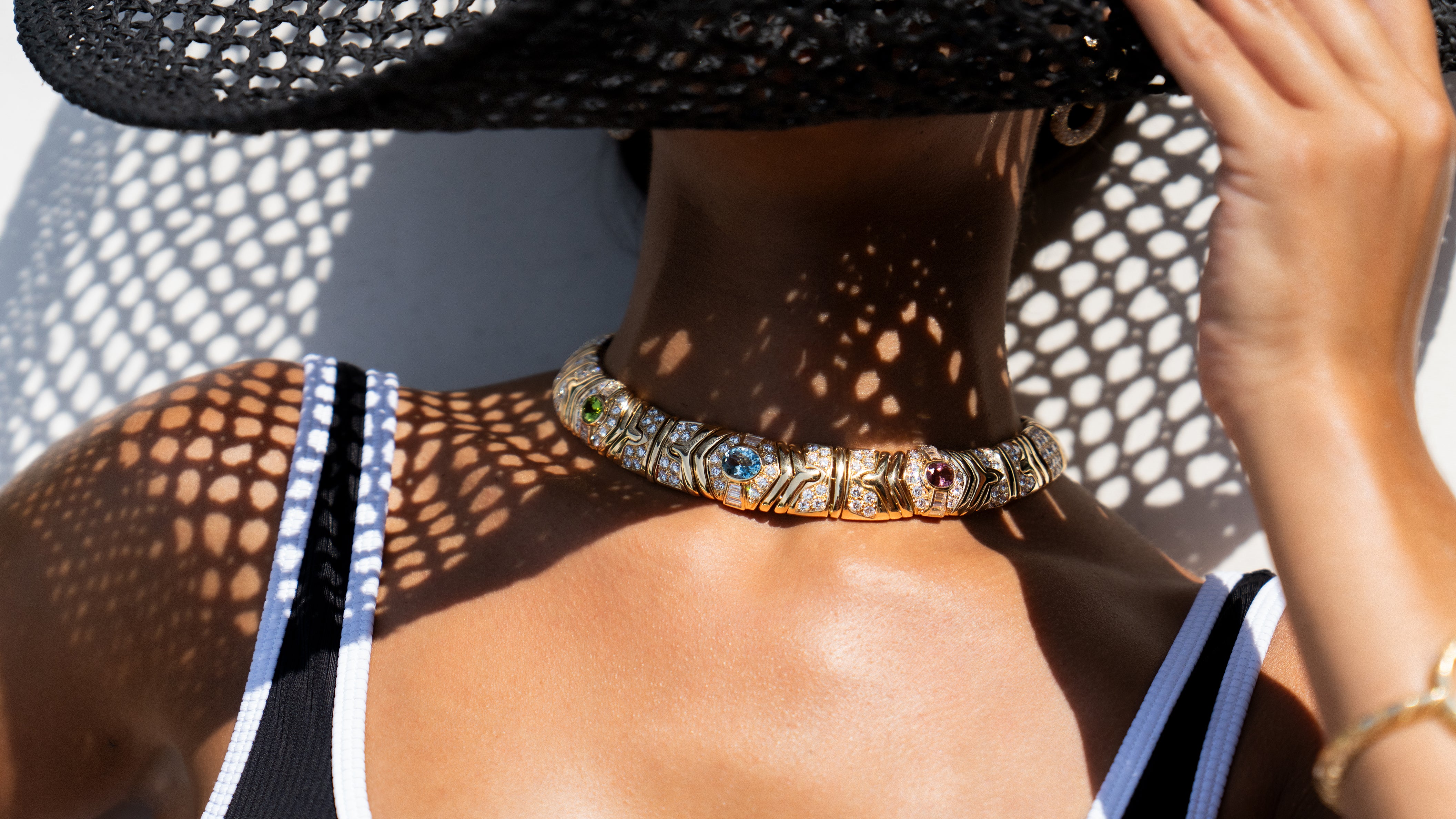Maison Gaillard
Amédée Galliard may have been the founder, but it was his grandson, Lucien, who would reach the pinnacle with Art Nouveau designs that took the world by storm.
The First Gaillards
Amédée Galliard founded his eponymous company in Paris in 1860. His offerings were primarily gilt copper jewels. When his son, Ernest, took over the business in 1860, there was a shift to jewelry created of silver. The firm also worked in niello, a black metallic alloy comprised of sulfur, copper, silver, and lead. Niello, like enamel, is fused to a metal base, but its luster is metallic instead of vitreous, and it's a lot tougher than enamel. It was unusual for a Parisian jeweler to use niello – the alloy was primarily seen in Russia, Germany, and Austria.
Ernest also experimented with enamels and Japanese-style inlay work. The late 1860s were a time when a fascination with Japanese art began to take hold in Paris.
At the Exposition Universelle 1878 in Paris, Gaillard won a silver medal for engraving. In 1889, the firm was awarded the Legion d'Honnour for its innovative technical contributions to the jewelry trade.
Enter Lucien
In 1878, Lucien Gaillard joined the firm as an apprentice at the age of 17, marking the arrival of the third generation at the Maison. Lucian took an interest in Japanese metal techniques. He was an enthusiastic student, quickly learning all the technical aspects of alloys, gilding, and patinas, and put his learning to good use, achieving fantastic results. At the Exposition Universelle 1889, Lucien received a gold medal for his engraved objects. The following year, he presented an impressive display of silver vases, notable for their subtle patinas. Although he did not receive an award that year, Lucien discovered René Lalique and was taken with Art Nouveau motifs. He began to create his own jewelry in the Art Nouveau style, with exquisite results.
In 1892, Ernest handed over the running of the business to Lucien, who was eager to assume the mantle. Lucien took over the family's atelier at 101, rue de Temple in Paris.
Lucien was asked to be a judge at the 1893 Universal Exposition in Chicago. In 1902, he was made a Knight of the Legion d'Honnour.
Gaining Recognition
Lucien's pieces won him acclaim at many Parisian salons from 1902 to 1904. All the rage at the time were Japanese motifs, and Gaillard was clearly inspired by the trend. His pieces featured stylized flowers, trees, dragonflies, butterflies, and grasshoppers. He employed several Japanese craftsmen at his Paris workshop. Together, they created works of art that featured organic materials such as horn and ivory. Metals, when used, were given a soft patina and enhanced with engraving or enamels. Traditional precious gemstones were sometimes used, but the emphasis was placed on the beauty of the piece and its meaning rather than the materials used to create it.
Gaillard produced a wide range of jewels and accessories, including rings, pendants, brooches, hairpins, combs, cane heads, and vases, employing Art Nouveau natural themes, including snakes, birds, peacocks, and swans; plants, sky, waves, roots, and grass. While his themes varied, each design featured just one.
In 1900, Gaillard won the Grand Prix and the Exposition Universelle in Bijouterie-Joaillerie.
Gaillard began to work in glass in the 1910s. The Maison created perfume bottles, collaborating with a variety of perfume houses, including Geldy and Corday.
Lucien Gaillard passed away in 1942, leaving behind a legacy of whimsical jewels and timeless objets d'art.
Notable Pieces
An enameled dragonfly whose wings wrapped around to form a ring was beautifully enameled in muted shades of blue and green. The addition of emerald gemstones completed the look.
Lucien's famous "Bluebird" comb featured a trio of birds in flight above a lovely background of clouds.
Gaillard's "Moth" pendant was breathtaking for its realistic beauty. Stunning citrine gemstones and carved horn embellishments, together with champlevé enamel and gold, gave flight to this stunning Art Nouveau motif.
A hair slide, designed with gold and horn, blossomed with flower and leaf elements. An oval citrine and a bouquet of pearls provided luscious touches to this stunning piece.
Museum Quality
Gaillard's work is on display at the Musé D'Orsay in Paris and New York's Metropolitan Museum of Art. The Maison's work was displayed in an exhibit at the Museum of Fine Arts in Boston, Massachusetts.
